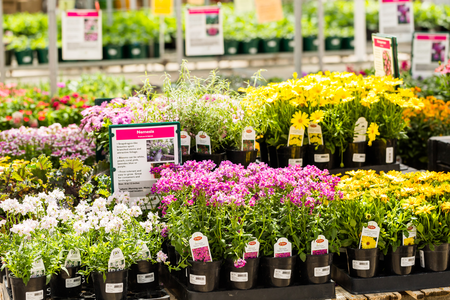Selling plants? It starts with proper plant data!
On the average garden centre webshop, you can find a wide selection of products barely any plants. Since the start of Covid-19 more and more garden retailers discovered the benefits of showing and selling plants online but uploading these products remains challenging.
You can’t call your nursery to provide you with an Excel file with all the information, your ranges change every week and you need to provide customers with a lot of relevant information. If you don’t do that they might place their new Monstera in their windowsill facing south just because it’s a nice spot...
We have listed 6 tips that will help you show & sell plants online in the best possible way!
1. What’s the name of the plant?
A Weber is a Weber but a Ficus isn’t a Ficus. In fact, the Ficus benamina and Ficus Elastice don’t even look the same, let alone the other 200 varieties. Some plants have a very well known common name, like the Pancake Plant but other plants are well known by their Latin name, like the Geranium.
So what to do?
We prefer to start with the Latin name. After all, that’s the official name of the plant. On most webshops we develop, the common name is added as a subtitle so both names are displayed. This should make everyone happy, and Google will surely appreciate it as well!
2. Plant properties
A consumer is looking for a plant for his house or patio and ends up on your webshop. He can browse through 1500 plants: the options are overwhelming. But just like booking a holiday, too many options won’t help. The customer will be confused, isn’t sure what to do and will leave your website.
(And if you don’t believe me that too many options result in fewer sales you might want to check this extensive research paper!)
There’s an easy way to resolve this issue: help your customers narrow down a selection of plants matching their needs instead of showcasing your entire product range. The exact steps depend on your product range, but for a shrub you might want to have these steps on your website:
-
Sun, partial sun or shade
-
Clay, loam or sand
-
Max. height of 10, 50 or 100 cm, or higher
Within 3 steps the range is limited from 1,500 to 50 plants. Customers can browse through these plants and add additional filters, like the colour and flowering period, to narrow it further down to a list of 10 winners.
Before you can set up these filters you need to have all these specifications available for all your plants. At Garden Connect, we have a database of over 8,000 plants including over 15 specifications per plant.
This allows you to set up front page blocks like this:
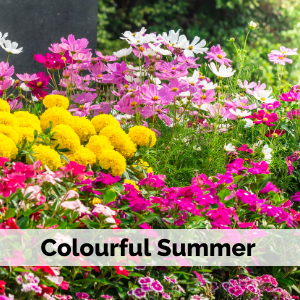
And you can also set up proper product filters:
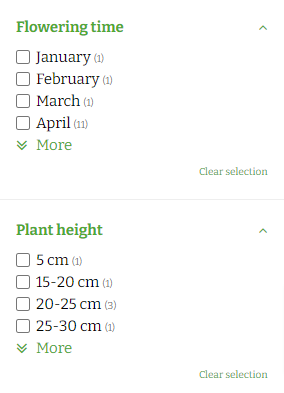
This will help your customers to find the right plant for their needs, without any stress.
3. A unique, Google-friendly description
A webshop that isn’t found on Google is like a garden centre without an entrance door: very quiet! Both your customers and Google will appreciate a professionally written text for each product and plant on your webshop. A proper description is unique for your website, so not available on other websites or webshops, and has at least 200 words.
If you offer hundreds or thousands of plants, that can be a very demanding task yet it’s important to do. Recently, we uploaded 80 plants to a webshop and added descriptions to these 80 products. After a few weeks the number of visitors increased significantly:

The number of visitors in February 2020 was more or less the same as in 2021, but once Google discovered the wealth of new content the rankings and therefore the number of visitors started to increase. Early March, the number of visitors was up 300% compared to 2020!
So it’s clear that descriptions are important, yet it’s a lot of work. Luckily, we’ve developed a solution to help you: automation. To be Google-friendly, every description has to be fully unique so we’re using Artificial Intelligence to create unique texts.
Are you reluctant to use artificial intelligence to create texts? Decide for yourself what you think of this paragraph:
The soil in which the Malus (Rosaceae) thrives best consists of clay, sand, lime or loam and is moisture-retaining or dry. The Malus (Rosaceae) prefers a sheltered or open spot in the sun or partial shade. The Malus (Rosaceae) has no spines. The best acidity this plant's soil can have is acidic, alkaline or neutral. This tree does not give off a scent. The tree is quite large because it grows to a maximum height of 8 m!
Not too bad, is it?
4. Eye catching plant photos
That brings us to the most important element of your product page: photos! Customers need to see what they are going to buy so you need to show plantphotos. And that’s a bit complicated since plants are living products and every plant is different. It’s impossible to show exactly what a customer will get. On top of that, most plants you sell don’t look very attractive at all:
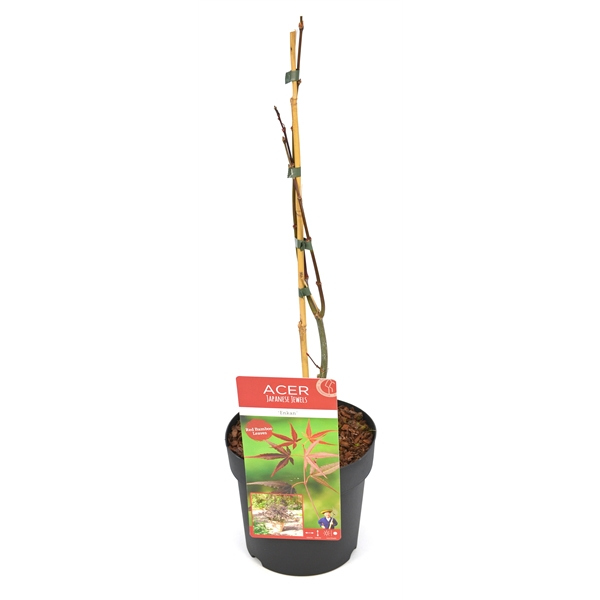
So what’s next? The boring photo shown above is helpful since that’s what the customer is going to get if he buys online or visits your garden centre. But it’s not very inspiring, is it?
We advise you to add multiple images on top of the raw product to give visitors a better understanding of how beautiful the plant will be in the near future:


These 3 plant photos give all the information a website visitor needs to make a purchase decision.
5. The result
Once the properties, descriptions and photos are uploaded, your webshop or online plant showroom is ready to go live! Your plant pages might look like this:
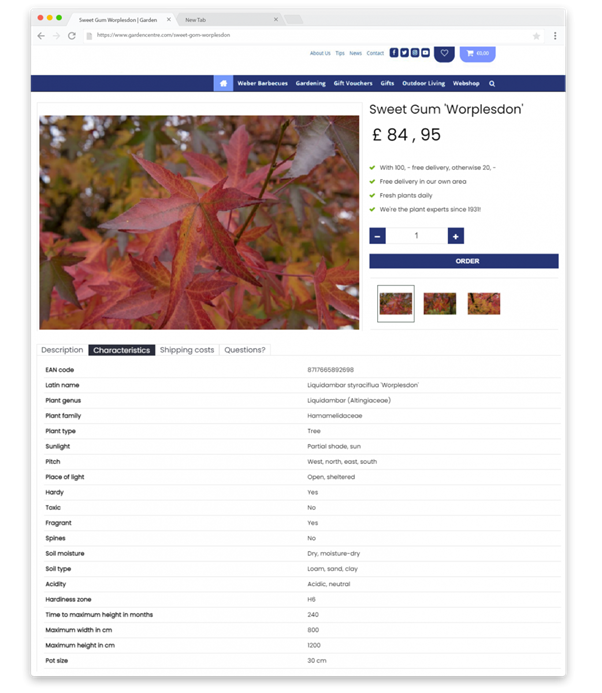
With the Garden Connect system, you can decide how you want to sell your plants:
-
Collection only
-
Local delivery service, based on postcode areas
-
Nationwide deliveries
This process is fully automated so you don’t have to worry about it once set.
If you’re going to use the plant data Garden Connect provides, you’ll get multiple professional photos per plant, unique descriptions and at least 15 properties per plant. This will help you to set up a professional webshop or showroom with plants.
The result: more online orders and/or store visitors!
6. But why would you bother doing this?
We know you know exactly what it takes to upload plants to your webshop in a professional way and don’t get us wrong: it’s a lot of work. So why would you do it in the first place?
Plants are hip & happening and consumers are looking for info online anno 2021.
Did you know 76% of in-store purchases are researched online? Customers are looking for plant information online before they make a decision on where to buy them. By uploading your plant range to your webshop you tap into this audience. You can read more about the changing customer journey on our Local SEO Marketing page.
If you want to learn more about or plant data, garden centre webshops and online marketing service, please reach out to us.



